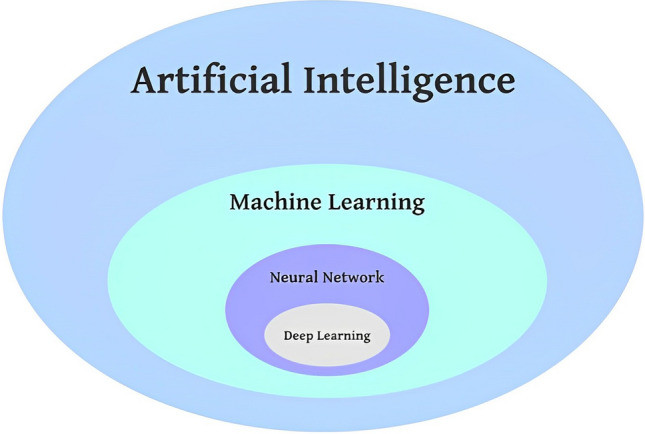Adaptive Deep Brain Stimulation Emerges as Game-Changing Frontier in Parkinson’s Disease Treatment


In Brief
Adaptive deep brain stimulation (aDBS) offers a novel, individualized treatment for Parkinson’s disease, providing a significant advancement in medical technology and patient care.

Parkinson’s disease affects millions of people worldwide and has long been a major medical concern. However, new developments in medical technology, especially in the field of deep brain stimulation (DBS), are giving both patients and medical professionals fresh hope. Adaptive deep brain stimulation (aDBS), a novel technique that has the potential to completely transform the way Parkinson’s disease is treated, is at the forefront of this breakthrough.
Prominent data and analytics firm GlobalData has emphasized how aDBS has the ability to completely change the way that Parkinson’s disease is managed. Compared to conventional DBS techniques, this technology is a major advancement that gives patients a more individualized and responsive therapy choice.
Deep Brain Stimulation’s Evolution
In order to fully comprehend the importance of aDBS, one must be aware of the history of deep brain stimulation as a Parkinson’s disease treatment. For many years, Parkinson’s patients with their motor symptoms have been helped by traditional DBS. In order to modify neural activity, this technique entails implanting electrodes in particular brain regions and providing constant electrical stimulation.
Conventional DBS has limitations, even though it has worked well for many individuals. Regardless of the patient’s present level of symptoms, continuous stimulation may not always result in the best symptom alleviation and may cause adverse consequences. This is where aDBS comes into play, providing a more complex and individualized course of therapy.
Adaptive Advantage
Treatment strategies for Parkinson’s disease have undergone a paradigm change thanks to adaptive deep brain stimulation. In contrast to its predecessor, aDBS tracks brain activity in real time using sophisticated artificial intelligence algorithms. Given this constant observation, the system may modify stimulation settings in response to the patient’s current requirements, therefore establishing a customized, round-the-clock treatment plan.
This adaptive technique has several potential advantages. By providing stimulation just when required, aDBS may lessen the negative consequences of constant stimulation. Furthermore, the system’s capacity to adapt to alterations in symptoms over the course of the day may result in more reliable symptom management and enhanced patient quality of life.
Studies carried out recently at the University of California, San Francisco (UCSF) have produced strong proof of the effectiveness of aDBS. The results of these tests, conducted in 2023 and 2024, showed that aDBS might greatly enhance Parkinson’s patients’ sleep and mobility. There were reports of a 50% reduction in symptoms, which made the results very noteworthy.
For those suffering from Parkinson’s disease, these results provide genuine hope, not simply statistics on a page. The ability to treat symptoms continuously without requiring frequent manual modifications has the potential to significantly increase patients’ independence and general well-being.
The introduction of aDBS coincides with a notable expansion in the worldwide market for neurological devices. GlobalData projects that this market, which was valued at $12.5 billion in 2023, would rise at a compound annual growth rate (CAGR) of 4.60% to reach $20.9 billion by 2033.
The rising need for cutting-edge neurology diagnostic and therapeutic technology is reflected in this growth trend. The demand for creative solutions grows as the population ages and the prevalence of neurological conditions like Parkinson’s disease increases.
The Role of AI and Digital Health
The creation of aDBS is a component of a larger movement in healthcare, including digital health and artificial intelligence. This change is not just happening with implanted devices; it is also happening with wearable technology and digital health applications that may track symptoms and give medical professionals useful information.

For example, new developments have used information from wearables such as the Apple Watch to track Parkinson’s symptoms outside of medical facilities. Personalized medicine has entered a new phase with this integrated approach to illness care, which combines advanced implanted devices with exterior monitoring systems.
Regulatory agencies are aware of the potential of aDBS. The FDA in the United States has been advocating for novel approaches to managing Parkinson’s disease, indicating a regulatory climate that is conducive to the use of these new technologies.
Even while aDBS has a lot of great potential, it’s crucial to recognize the problems that still lie ahead. When implementing such cutting-edge technology, considerations like cost, accessibility, and long-term efficacy must be carefully taken into account.
Furthermore, the surgical process needed to implant the aDBS system carries dangers, just like any other implanted device. Widespread acceptance of these gadgets will depend on ensuring their long-term safety and dependability.
The issue of patient selection also exists. Maximizing the impact of aDBS will need identifying which patients are most likely to benefit from it and at what stage of the disease. This will necessitate continuous investigation and improvement of treatment plans.
The Broader Impact on Neurology
There are ramifications for more than only Parkinson’s disease that arise from the development of aDBS. The real-time monitoring and adaptive response concepts that underpin this technology may be used in the treatment of various neurological conditions.
For ailments like essential tremor, dystonia, and even some mental illnesses, this creates intriguing opportunities. The ability to create specialized, effective therapies will advance along with our comprehension of brain health and malfunction.
More than merely symptom alleviation, the possibility of a medication that can adjust to a patient’s changing demands throughout the day gives promise for a more autonomous, normal life for those with Parkinson’s disease.
The potential for better sleep is especially noteworthy, as the UCSF trials have shown. Treating sleep disruptions, a prevalent and sometimes incapacitating feature of Parkinson’s disease, may have an impact on the general health and well-being of patients.
Additionally, the possibility of fewer side effects and the decreased requirement for manual adjustments may lessen some of the daily challenges associated with treating the illness for both patients and their caretakers.
The Role of Data and Personalized Medicine
The introduction of aDBS is in perfect harmony with the increasing focus on individualized medicine. Through continuous data collection and analysis of each patient’s brain activity and symptom patterns, these devices have the potential to offer hitherto unheard-of insights into the course and treatment of Parkinson’s disease.
This abundance of information may help us understand the disease better overall in addition to providing better care for specific patients. Future study may benefit from aggregated and anonymized data from aDBS systems, which might result in even more improvements to treatment plans.
As with any medical technologies, aDBS becomes more widely used, guaranteeing fair access to it will be crucial. Even though the technology is very promising, precautions need to be made to make sure that it doesn’t worsen already-existing healthcare inequities.
This might include things like regulations to facilitate access to these treatments, training initiatives for healthcare professionals in remote regions, and cost-cutting tactics. Given the prevalence of Parkinson’s disease worldwide, a concerted effort is needed to make these technologies available outside of wealthy countries.
Disclaimer
In line with the Trust Project guidelines, please note that the information provided on this page is not intended to be and should not be interpreted as legal, tax, investment, financial, or any other form of advice. It is important to only invest what you can afford to lose and to seek independent financial advice if you have any doubts. For further information, we suggest referring to the terms and conditions as well as the help and support pages provided by the issuer or advertiser. MetaversePost is committed to accurate, unbiased reporting, but market conditions are subject to change without notice.
About The Author
Victoria is a writer on a variety of technology topics including Web3.0, AI and cryptocurrencies. Her extensive experience allows her to write insightful articles for the wider audience.
More articles

Victoria is a writer on a variety of technology topics including Web3.0, AI and cryptocurrencies. Her extensive experience allows her to write insightful articles for the wider audience.

















































